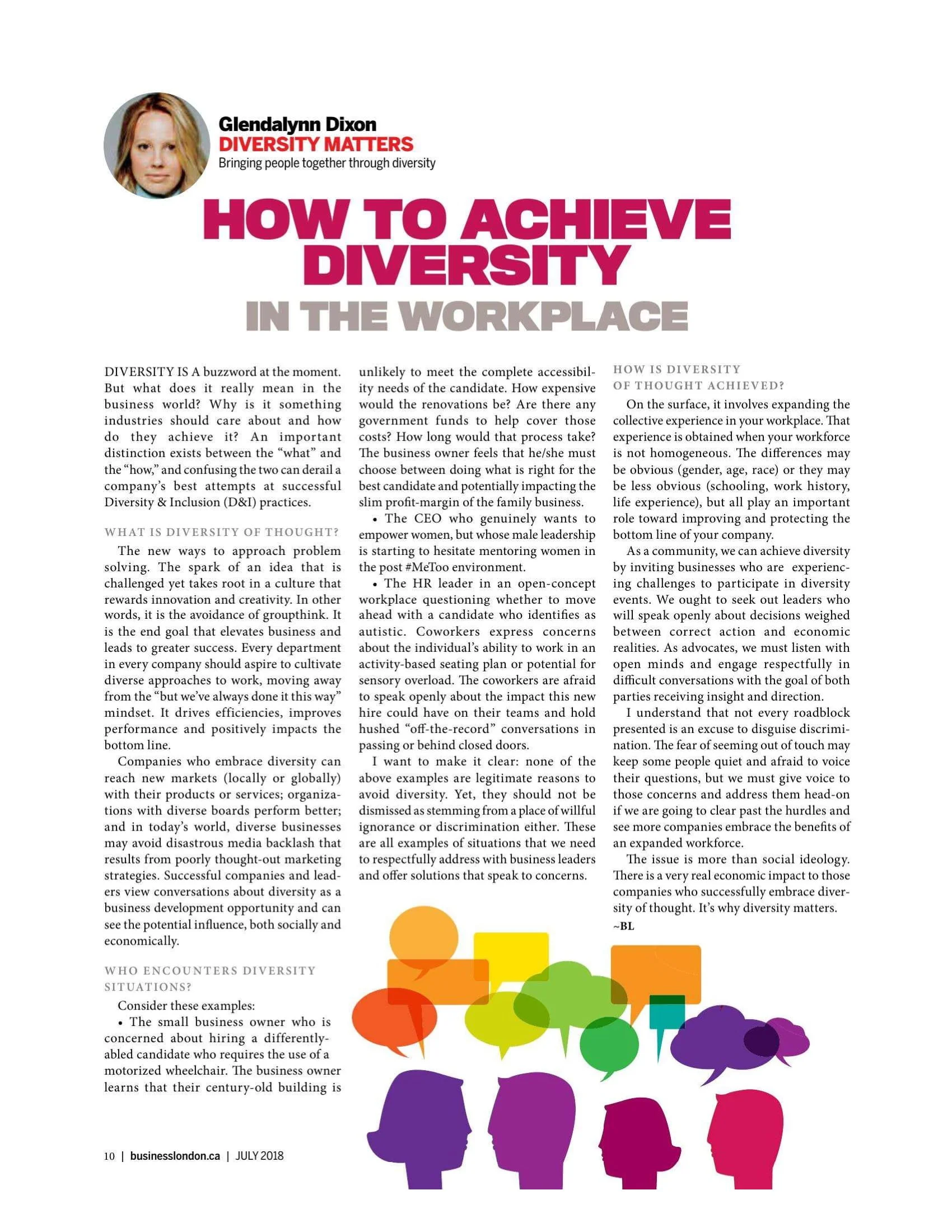How to Achieve Diversity in the Workplace
Diversity is a buzzword at the moment. You cannot skim the business pages, LinkedIn or Twitter without seeing it pop up. Often in regards to a company experiencing negative press following a PR nightmare. But what does it really mean to the business world? Why is it something industries should care about and how do they achieve it? There is an important distinction between the “what” and the ”how”. Confusing the two can derail a company’s best attempts at successful Diversity & Inclusion (D&I) practices.
The what is diversity of thought.
This is the end goal that elevates business and can lead to greater success. The avoidance of groupthink. The new ways to approach problem-solving. The spark of an idea that is challenged, yet, takes root in a culture that rewards innovation and creativity. Every department in every company should aspire to cultivate diverse approaches to their work. Effectively, doing away with the ‘but we’ve always done it this way’ mindset. It drives efficiencies, improves performance and positively impacts revenue.
Why?
Companies that embrace diversity can reach new markets (globally and/or locally) with their products or services; organizations with diverse boards perform better; and importantly in today’s world, more diverse businesses may avoid the disastrous social media backlash that results from poorly thought out marketing strategies. Tomorrow’s most successful companies and leaders view conversations about diversity as a business development opportunity. They are not about to let a good prospect pass them by. They see the potential impact, both socially and economically.
How is diversity of thought achieved? On the surface, it involves expanding the collective experience in your workplace. That experience is obtained when your workforce is not homogeneous. Those differences may be obvious (gender, age, race) or less obvious (schooling, work history, life experience). All play an important role in improving and protecting the bottom line of your company.
Original article in Business London Magazine, July 2018
And that is where the rubber really hits the road and where I have seen diversity advocates (myself included) sometimes fail both business leaders and the communities we support. We turn into free advertisers for Nike (“just do it”!) without acknowledging the very real concerns you are facing in the business community.
I understand that not every roadblock presented is an excuse to disguise discrimination. The fear of seeming out of touch may keep some people quiet, afraid to voice their questions. Yet we must give voice to those concerns, and address them head-on if we are going to clear past the hurdles and see more companies embrace the benefits of an expanded workforce.
Consider these scenarios:
• The small business owner who was concerned about hiring a differently-abled candidate who required the use of a motorized wheelchair. The business owner was devastated to realize their century-old building was unlikely to meet the complete accessibility needs of the candidate. How expensive would the renovations be? Are there any government funds to help cover those costs? How long would that process take? This really tore them apart emotionally. They felt as though they had to choose between doing what was right for the best candidate and potentially impacting the slim profit margin of their family business and the handful of employees who already worked there
• The CEO who genuinely wants to contribute to the empowerment of women but whose male leadership is starting to hesitate at mentoring women in the post #MeToo environment.
• The HR leader in an open-concept workplace questioning whether to move ahead with a candidate who identified as autistic. Coworkers expressed concerns about the individual’s ability to work in an activity-based seating plan or the potential for sensory overload. Those coworkers were afraid to speak openly about the impact this new hire could have on their teams and held hushed “off-the-record” conversations in passing or behind closed doors.
I want to make it clear: none of the above are legitimate reasons to avoid diversity.
Yet they should not be dismissed as stemming from a place of willful ignorance or discrimination either. These are all examples of situations that we need to respectfully address with business leaders and offer solutions that speak to your concerns.
As a community, we can achieve this by inviting businesses that have or are experiencing challenges to participate in diversity events. I feel we’ve done a disservice to gloss over the messier aspects of the diversity conversation. We ought to seek out leaders who are willing to speak openly about the decisions weighed between “what’s right” and economic realities. As advocates, we can listen with open minds, understanding we will hear things that may clash with our worldview. We can engage respectfully in difficult conversations with the goal of both parties receiving insight.
The issue is more than social ideology. There is a very real economic impact on those companies that successfully embrace diversity of thought.
It’s why diversity matters.


